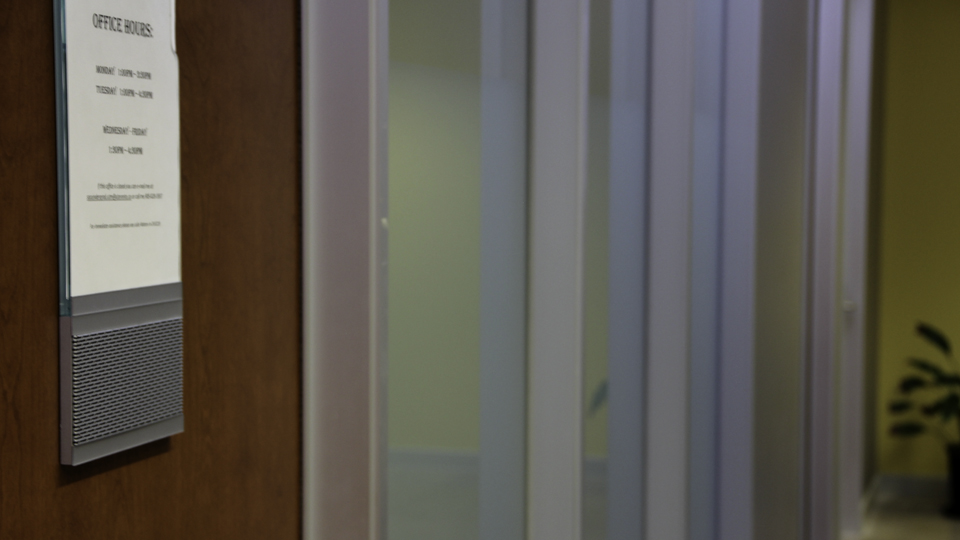In a world of texting, instant messaging, and endless social media updates, it doesn’t come as a surprise that face-to-face communication is dwindling. It’s no different at UTM. With more and more students turning to the Internet, many professors find their office hours going unvisited.
Most students don’t feel the need to drop by—they believe a quick Google search usually tells them everything they need to know. Perhaps they’ll shoot a quick email to their professor for course-specific questions. In a sea of information and instant communication, few students find office hours necessary.
Nathan Innocente, a sociology professor at UTM, generally tries to keep his door open. “I have four set office hours a week, but my normal policy is that if I’m on campus and you’re on campus then you can stop by anytime,” he says.
But the actual number of students that come knocking isn’t representative of the amount of students enrolled in his classes. When asked how many students make use of his office hours, he said, “Surprisingly, with the number of students I have, not a lot. This semester I have 1,210 students. Sometimes, when there are assignments due, I’ll tend to get a higher volume of traffic, and on those weeks I’ll see around 15–20 students.”
Innocente doesn’t condemn asking questions through email. “[It] depends on the question. If they have a [simple] question, students find it easier to send an email and get a relatively quick reply, but for more complicated questions I usually ask students to come in,” he says. “I could write four paragraphs in an email to explain it, which would take a long time, or we could have a five-minute conversation about it.
“For broader issues like how to prepare to study for a test, they come to me or use the Blackboard discussion board. Those kinds of questions usually encourage them to come in, but by and large I think email’s easier for everybody.”
Chemistry professor Thottackad Radhakrishnan (or Professor Krish, as he’s generally known to his students) sees the same pattern in his office hours.
“Many students email me, but I don’t respond in detail. If a question requires a one-word answer then I’ll give the answer,” says Radhakrishnan. “But for explanation questions, I always tell them to come to my office hours, because then instead of a monologue it can be a dialogue, which prompts the student to think over the answer instead of me just giving it. I like the teacher-student interaction to be a give-and-take process.”
In general, UTM professors seem to prefer meeting their students face to face instead of replying to one email after another in an inbox teeming with students’ questions. “There’s a pretty significant correlation between the kinds of students that usually stop by to see the TA and during office hours to talk to me about something concrete, like their assignments,” says Innocente. “Generally, the correlation is that usually they’re the better students. They’re the people in the 70s who want to get in the 80s, or the ones in the 80s that want to get in the 90s. They’re putting in the extra effort, and it shows in a mildly strong correlation with their grades.”
However, many students still don’t take the opportunity to drop by. Sana Shaikh, a first-year student in life sciences, doesn’t find office hours obsolete—just impractical. “Above anything, many office hours that I’d otherwise take advantage of are either during class times, or not distributed throughout the week as often as I’d like,” she says. She voices the opinion of many students on campus who find office hours helpful, but can’t take the time to ask a question that could just be answered through email.
Even so, professors recommend scheduling appointments or signing up for timeslots in order to take advantage of valuable one-on-one time with the professor. “I feel strongly that a teacher is an integral part of any learning process, and nothing can substitute [for] them,” says Radhakrishnan.


